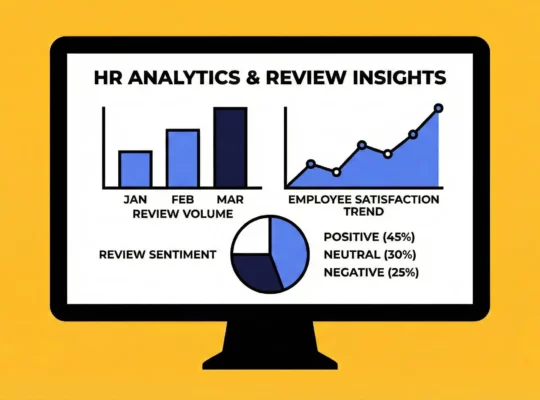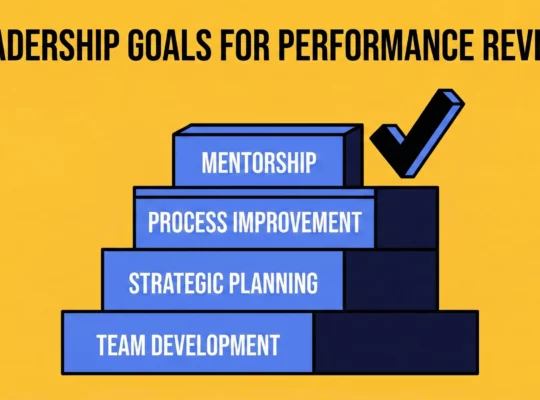Vetting candidates thoroughly is crucial for making successful hiring decisions. A strong vetting process ensures that you find the right fit for your company’s culture and needs, reducing turnover and enhancing productivity. At Review.jobs, we understand the significance of comprehensive candidate vetting and aim to provide HR professionals and company leaders with a solution to do it effectively.
Table of Contents
- Understanding the Importance of Vetting
- Creating an Effective Vetting Process
- Best Practices for a Successful Vetting Process
I. Understanding the Importance of Vetting
What is Candidate Vetting?
Candidate vetting is the multi-step process of thoroughly evaluating potential hires. It goes beyond just checking qualifications. It involves assessing skills, experience, and cultural fit to ensure the candidate aligns with your company’s values and goals.
Through interviews, reference checks, and background screening, vetting helps you identify the best fit for the role and build a strong, successful team. Strategic recruitment branding, combined with an effective vetting process, is the recipe for building a thriving team.
Why Vetting Matters
Effective vetting goes beyond checking resumes – it’s about finding the perfect fit for your company culture and long-term goals. Here’s why a well-defined vetting process is crucial:
Building a Thriving Team
A strong cultural fit is essential. Vetting allows you to identify candidates whose values and work styles align with your company’s DNA. These individuals are more likely to be engaged, contribute positively, and become valuable members of your team.
Reduced Turnover Costs
High turnover rates are expensive. Thorough vetting helps you select committed candidates who are passionate about the role and less likely to leave prematurely. This translates to significant savings associated with recruitment, onboarding, and lost productivity.
Protecting Your Reputation
Background checks are a vital part of vetting. They help identify any red flags that could potentially damage your company’s reputation. Hiring trustworthy individuals fosters a safe and professional work environment.
Boosting Productivity and Morale
Teamwork makes the dream work! Vetting allows you to assess cultural fit and team dynamics. Hiring individuals who complement existing team members fosters collaboration, innovation, and a more positive work environment. This translates to increased productivity and overall employee morale.
Reaping the Rewards of Effective Vetting
Investing in a robust vetting process goes far beyond simply filling a vacancy. Here are some key outcomes that organizations can expect:
Reduced Turnover and Increased Retention
By ensuring a strong cultural fit and alignment with skills needed for success, well-vetted employees are more likely to be satisfied, engaged, and stay with the company for the long term. This translates to significant cost savings associated with recruitment and onboarding.
Enhanced Job Performance
A thorough vetting process allows you to identify candidates with the right qualifications and experience to excel in the role. This leads to a more productive workforce with a higher capacity to achieve organizational goals.
A Stronger Workplace Culture
When you hire individuals who share your company’s values and contribute positively to the team dynamic, your overall workplace culture flourishes. This fosters collaboration, innovation, and a more enjoyable work environment for everyone.
II. Creating an Effective Vetting Process
Phase 1 – Pre-Interview Preparation
- Defining Job Requirements
Before you start the vetting process, it’s crucial to clearly define the job requirements. This includes both role-specific skills and qualifications, as well as soft skills and personality traits that align with your company culture.
- Role-Specific Skills and Qualifications: Identify the essential technical skills and experience needed for the job.
- Soft Skills and Personality Traits: Consider traits like teamwork, communication, and adaptability that will help ensure a good fit.
- Assembling the Vetting Team
A successful vetting process involves collaboration among various stakeholders:
- Roles of HR, Hiring Managers, and Team Members: HR professionals handle the initial screening and background checks while hiring managers and team members assess technical skills and cultural fit.
- Involvement of Marketing and Branding Specialists: These specialists provide insights into HR branding and how the candidate’s public profile aligns with the company’s image.
Phase 2 – Initial Screening
- Automated Tools and AI for Resume Parsing
Leverage technology to streamline the initial screening process. Automated tools and AI can help parse resumes and identify key qualifications, saving time and reducing bias.
- Identifying Red Flags and Inconsistencies
During the initial screening, look for red flags and inconsistencies in the candidate’s resume and application. This could include gaps in employment, frequent job changes, or discrepancies between their stated experience and their actual accomplishments.
Phase 3 – Evaluating Candidate Profiles
- Work Experience and Skills
Assess the candidate’s relevant job history and demonstrated accomplishments. This includes:
- Relevant Job History: Review their past positions and responsibilities to ensure they have the necessary experience.
- Demonstrated Accomplishments and Contributions: Look for specific achievements that highlight their skills and abilities.
- Education and Certifications
Verify the candidate’s degrees and professional qualifications. Continuous learning and development are also important indicators of a candidate’s commitment to growth.
Phase 4 – Conducting a Successful Interview
- Ask Targeted Questions
Use a mix of behavioral, situational, and technical questions to evaluate the candidate’s suitability for the role.
- Behavioral and Situational Questions: These questions help you understand how the candidate has handled situations in the past and how they might handle similar situations in the future.
- Technical and Role-Specific Questions: Assess their technical expertise and how well they understand the role.
- Evaluate Candidate Responses
Utilize the STAR method (Situation, Task, Action, Result) to assess how candidates structure their responses and their ability to address challenges.
- Assess Cultural Fit
Evaluate how well the candidate’s values and behaviors align with your company culture.
Phase 5 – Conducting Background Checks and References
- Verifying Employment History
Ensure the candidate’s employment history is accurate by contacting previous employers and verifying the details provided.
- Checking Criminal Records and Credit History
Conduct thorough background checks, including criminal and credit history, to mitigate any risks associated with the new hire.
Phase 6 – Decision-Making
- Weighing Pros and Cons
Balance the candidate’s qualifications with their cultural fit, considering their long-term potential and growth within the company.
- Collaborative Decision-Making
Involve all stakeholders in the decision-making process, comparing evaluations and discussing the strengths and weaknesses of each candidate.
III. Best Practices for a Successful Vetting Process
Streamline Your Hiring
A well-defined vetting process ensures every candidate receives a fair and thorough evaluation. Break down the process into clear, manageable stages to help systematically assess candidates and avoid overlooking crucial steps.
Consistency is Key
Apply the same pre-defined criteria, interview questions, and evaluation methods to all candidates for the same position. This fosters fairness and allows for an objective comparison.
Document Everything
Maintain detailed records for each stage of the vetting process. This includes interview notes, assessments, and feedback from stakeholders. This documentation becomes valuable not only for legal compliance but also for future reference and improvement of the vetting process.
Respect Candidate Privacy
Treat all candidate information with the utmost confidentiality. This includes resumes, interview notes, and references. Only share information on a need-to-know basis and ensure secure storage of all data following relevant data protection regulations.
Evaluate the Vetting Process
Regularly review and update your vetting process to ensure it remains effective and relevant. Gather feedback from those involved in the hiring process to identify areas for improvement.
A well-structured vetting process that aligns with the company’s employer brand is crucial for finding the right candidates who will thrive within your company. By following the guidelines outlined above, you can enhance your hiring process and make better hiring decisions. Remember, investing time and effort in vetting candidates thoroughly will save you time and money in the long run. Engage with Review.jobs for more resources and tools to support your employee vetting and management needs.





